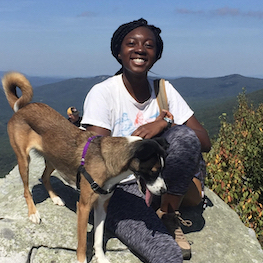 Last week I wrote about the new interactive chapters and SimUText features coming for this fall. We haven’t neglected our labs this year either. Here’s what’s new in SimBio Virtual Labs for fall 2011.
Last week I wrote about the new interactive chapters and SimUText features coming for this fall. We haven’t neglected our labs this year either. Here’s what’s new in SimBio Virtual Labs for fall 2011.
Many of you have been helping out in our genetics research study by using the Mendelian Pigs lab this spring. As part of an NSF-funded study, we’re testing a hypothesis for how to help students understand the Hardy-Weinberg equation and other population genetics concepts. While the study will continue in the fall with a modified version of Mendelian Pigs, we’ll also be releasing the lab itself. It covers both Mendelian and population genetics and how those relate to each other, at a level suitable for an introductory class.
As part of the same grant, we’ve also been working on a new lab to help students with genetic drift. Still unnamed, the lab focuses on a conservation story around an endangered species of ferret and culminates with students designing a breeding and reintroduction strategy that preserves genetic diversity. We expect a beta of this lab to be out in early fall.
We’ve been upgrading our older EcoBeaker labs to our new SimBio Virtual Labs system all through the year, and taking the opportunity to improve them as we go. Some of you have already been using our new Niche Wars lab (fondly remembered by many as the bunny lab) where students must get different “species” of bunnies to coexist, exploring niches and competitive exclusion along the way as well diving into how agent-based models work.
Also out this spring is our new Finches and Evolution lab, an update of our older EcoBeaker lab called Islands and Selection. Using Darwin’s finches as a case study, the lab explores how selection acts on quantitative traits, trait correlation, and possible ways of getting incipient speciation.
This spring, we’ve just finished two additional upgrades. Leibig’s Barrel is a new version of our popular Limiting Nutrients lab. After exploring how nutrients can limit growth in an algal system, and how the “limiting” nutrient is always relative to the concentrations of other nutrients, students then use single species growth to predict competitive outcomes between multiple species under different conditions.
Top-Down Control updates our former Trophic Cascades lab. It recreates the famous Brooks and Dodson experiments where they added fish to a fishless lake and observed the trophic cascade that followed. Students are given a variety of tools and must do experiments to explain that cascade. This is a very open-ended lab, good for giving students experience with conducting their own experiments.
A final lab we’re working on this summer is Corridors, Stepping Stones, and Butterflies lab. One of our most popular EcoBeaker labs, it uses the plight of the Fender’s Blue butterfly in western Oregon to explore landscape effects on population survival, and how models can be used to help in conservation and restoration ecology. We expect the new version to be ready in early fall.
It’s been a busy year, as you can see, but exciting to be able to offer so many new ecology and evolution labs. Hope you enjoy using them. As always, we are very open to suggestions. If there’s an area of biology where you would love to have a virtual lab for your classes, please let me know.







